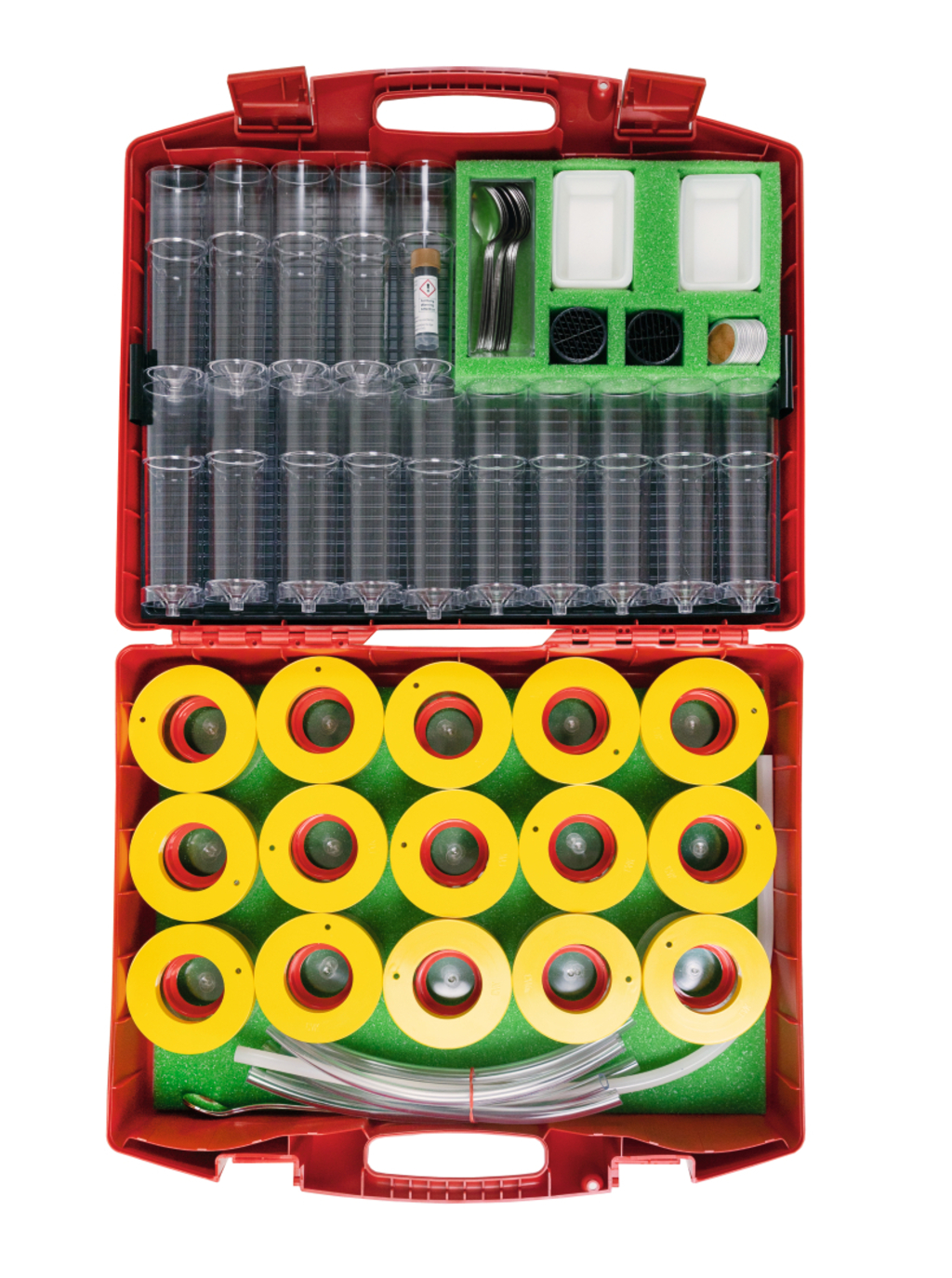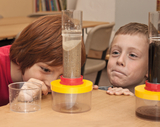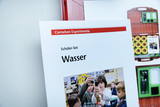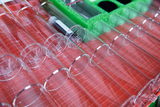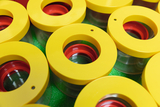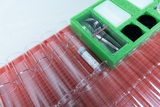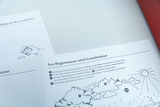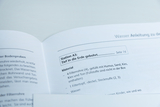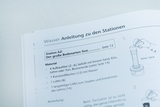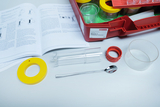Students kit Water purification
Water is vital to our lives and those of animals and plants. The kits Water purification and Water supply help children to understand the cycles of water.
They will learn where the water comes from, how it is distributed, utilized and finally rinsed away to be treated and put back into the cycle. They will recognize the importance of water for life and learn how to save water as a resource.
Examples of experiments:
- Which forms of soil allow water to pass through and which don’t
- Discovering that sand and gravel filter beds trap solids in the water, while dissolved substances (like oil, salt or detergent) cannot be removed from water by filtering
- The effect of polluted water on germinating plants
- The stages of mechanical cleansing of water
- Discovering the principle of linked water vessels and determining applications for it
Teacher’s manual ‘Experiments in workstations: Water purification’
With copy templates covering 24 workstations.
Age 9-10
Materials for up to 24 workstations (for 24 children at least)
Technical specifications
Size of kit: 540 x 450 x 150 mm
With this experiment, children learn how and where groundwater forms.
In the following four experiments, the children recognize that only the clay/loam holds back the water, while the other types of soil let it through and store it. The different rate at which the water seeps away depending on the type of soil is an additional observation.
The children realize that the rainwater ends up being clean, although it should be "dirty" because of the soil it flows through. However, they also recognize that this filtering process does not work with substances that humans bring in, e.g. B. salt, oil, detergent and paint. Students can later conclude that groundwater needs to be protected from such contaminants.
In connection with the formation of groundwater, the formation of rain is also of interest, because this is the only way to close the cycle. All attempts to do this in elementary school have the disadvantage that they only partially represent the processes in a model-like manner and require patience.
With this experiment, which requires a little handicraft work, children can get an idea of how a fountain is built and how it works in principle.
The children get an idea of how the pressure has to be generated with which the drinking water itself reaches the taps in high-rise buildings. One option is to use pumps that have to run constantly. The second option is to first pump the water into a container that is higher than the taps.
Children who have engaged in this experiment should understand why the materials mentioned (and others) must be kept out of the wastewater. Even with our “clean” materials, it is not a pleasant task to have to separate them from the water.
We use edible oil because in reality, like all other edible fat residues, it is removed during washing, but is not eliminated as such and therefore has a share in the sewage treatment plant work. The same goes for the toilet paper. As a result, disposal after the experiment is also easy: it can be done with the waste water.
- 1 × Plastic case ca.540x450x150 mm
- 1 × Tray 510x360x20 mm
- 1 × Storing diagram,int.vers.
- 1 × Foam insert for 31802
- 1 × Lidfoam grey,515x355x10mm
- 15 × Plastic dish 95x62x20 mm
- 1 × Connecting tube, 650x14 mmØ
- 7 × Connecting tubing, 300x14 mmØ
- 2 × Metal spoon, 220 mm
- 15 × Metal spoon, 138 mm
- 1 × Plastic box 140/50/35 mm
- 15 × Beaker, plastic 125 ml, graduated
- 15 × Beaker, plastic 250 ml, graduated
- 15 × Coarse sieve
- 15 × Copper wire gauze
- 15 × Filter tube, transparent
- 15 × Push-on connector, rod
- 15 × Plastic pot (old No.:90413)
- 1 × Colouring agent, blue
- 15 ×
